雅思阅读精讲:亚洲太空卫星科技
文章大意
全球太空竞争大背景下,部分亚洲国家开始发展低成本高性能的迷你卫星。其中,A段介绍了中国对宇宙空间探索的过去与将来;B段强调了过去几十年亚洲重视太空卫星科技研发;C段列举了太空卫星科技在不同领域的应用;D段说明太空卫星科技在不同国家和区域组织的不同程度;E段研说了底层技术以及这些技术在不同国家的研发水平;F段过渡到亚洲开始对迷 你卫星技术的追求;G段还浅谈了非技术因素的影响。
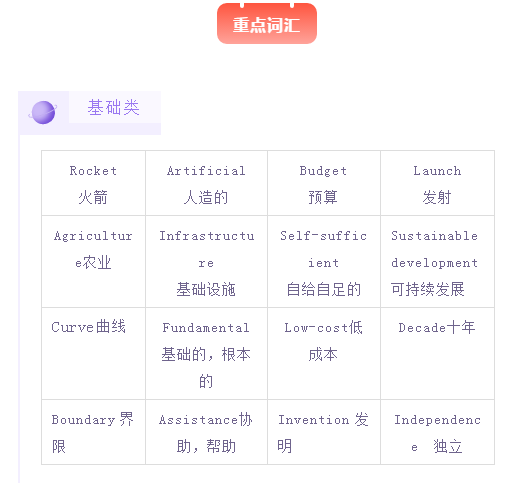
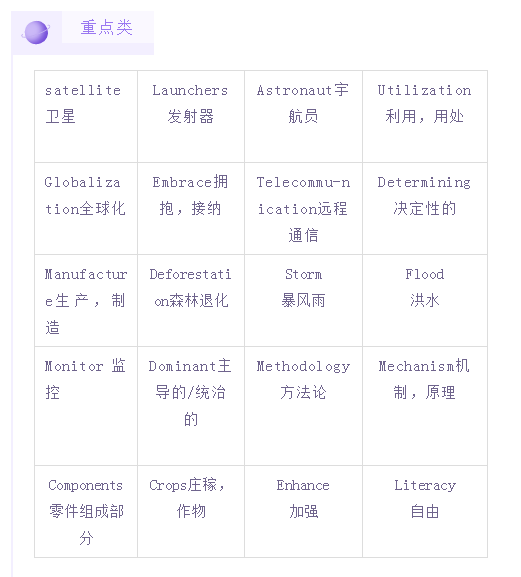
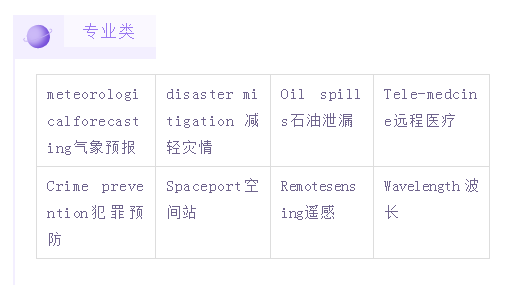
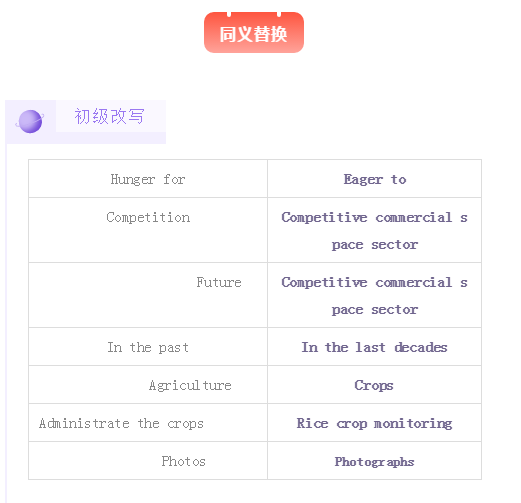
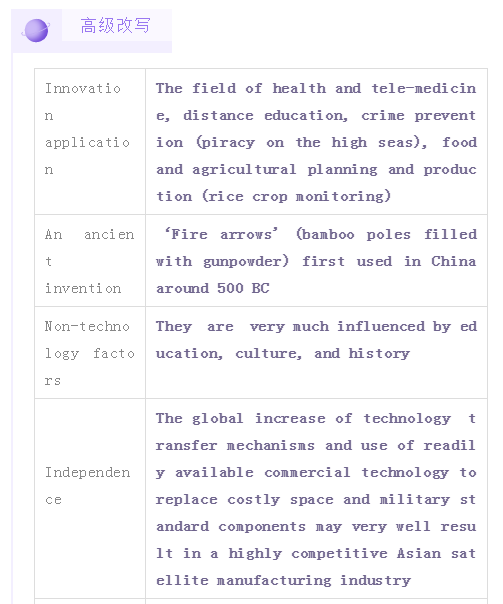

重点词汇
句型分析
1. It is not evident how Asian space will develop in the coming decades in the face of these trends.
在这样的趋势下,亚洲太空技术在接下来几十年如何发展尚未知晓。
解析
It is not evident (it 做形式主语)how Asian space will develop (主语从句)in the coming decades in the face of these trends (介词短语,交代时间和背景)
2. Southeast Asia is predicted to become the largest and fastest growing market for commercial space products and applications, driven by telecommunications (mobile and fixed services), the Internet, and remote sensing applications.东南亚有望成为商业太空产品和应用领域发展最快 规模zui大的市场,依靠远程通讯(移动和固定服务设备),网络和遥感。
解析
Southeast Asia is predicted to (被动语态)become the largest and fastest growing market for commercial space products and applications,(分词用法,动词的ed形式与句子主 语形成逻辑关系,)driven by telecommunications (mobile and fixed services), the Internet, and remote sensing applications.
当两个句子合并成一句话时,除了同学们常用的连词和主从 句用法,还可以使用动词的分词形式,强调逻辑顺承关系,丰富表达。在雅思阅读中注意分 词背后的因果/递进关系。
3. ASEAN members, unlike Japan, China, and India, do not have their own remote sensing satellites, however most of its member nations have facilities to receive, process, and interpret such data from American and European satellites.东盟(ASEAN)成员国,与日本,中国和 印度不同的是,没有他们日己的遥感卫星,但是大部分成员国还是有接收,处理和转译来日 美国欧洲卫星数据的设备。
解析
ASEAN members, unlike Japan, China, and India (插入语成分),do not have their own remote sensing satellites, however most of its member nations have facilities to receive, process, and interpret such data from American and European satellites.
主句+插入语,是雅 思阅读长难句考察的常见方式,同学们要把握住长难句中的主谓关系,理顺句子成分和句子意思。
更多关于雅思考试的个性化问题敬请咨询新航道官网
上一篇:雅思阅读题型分析
下一篇:雅思阅读提升三个小技巧